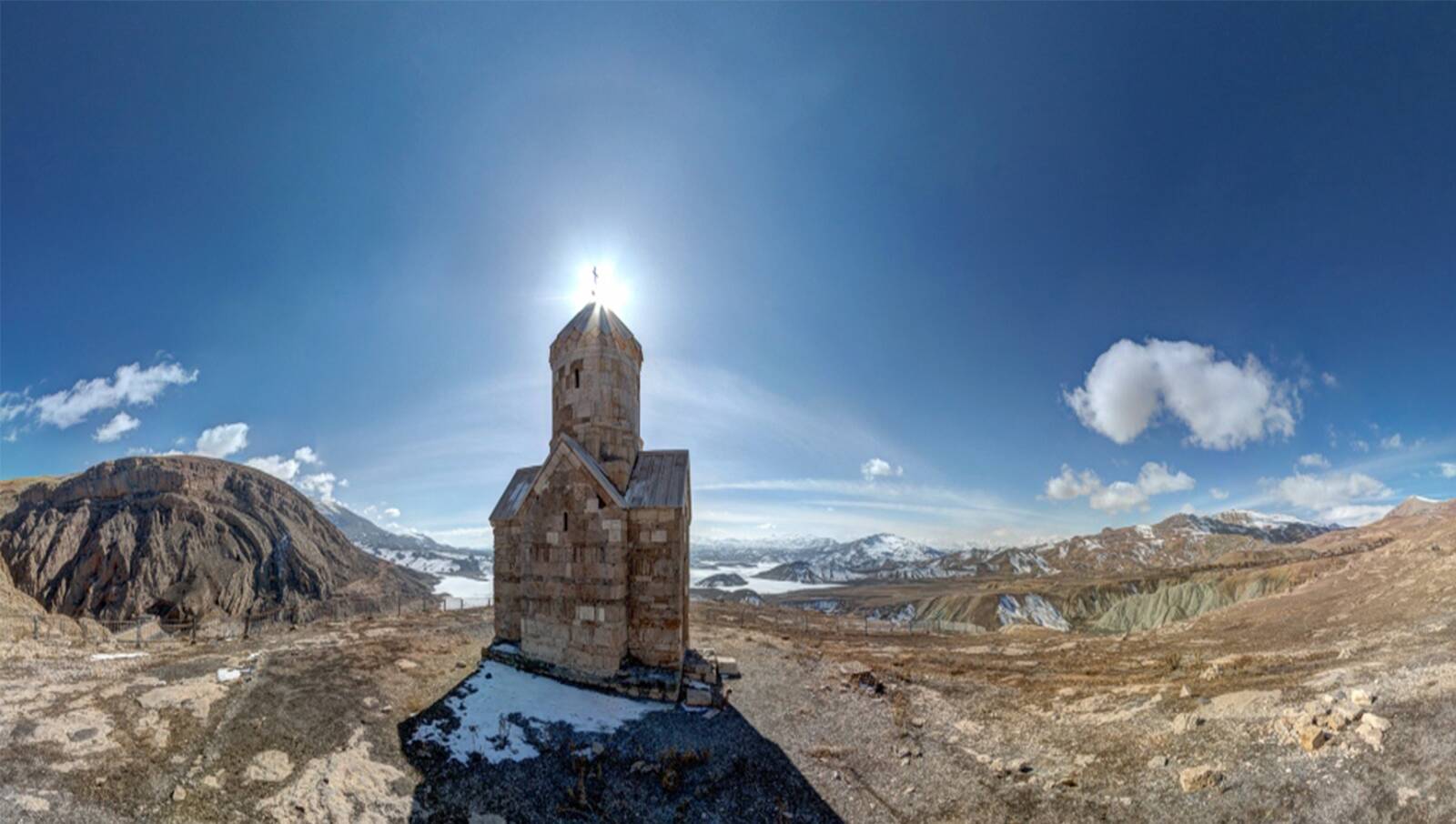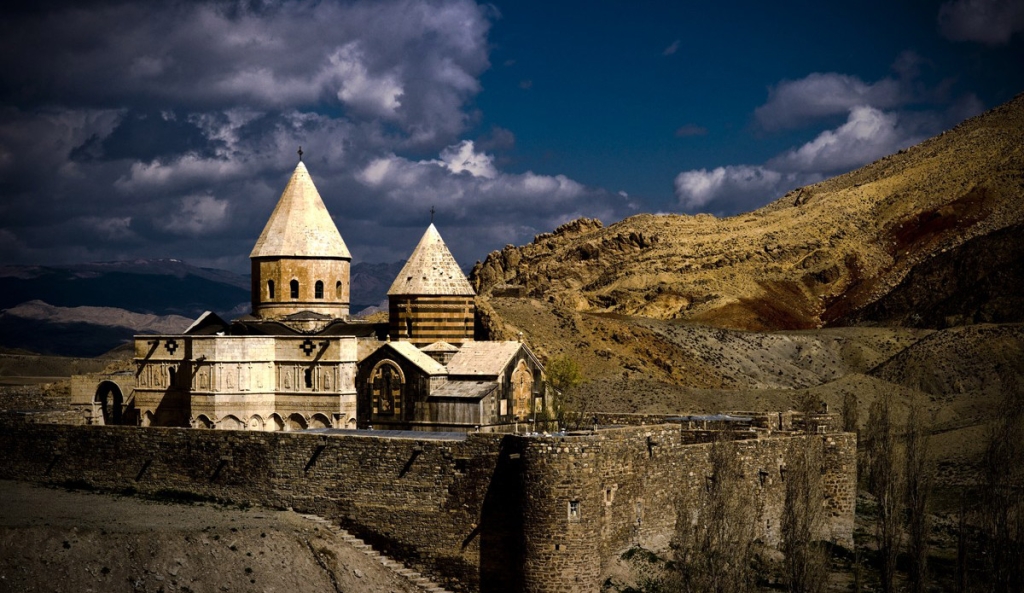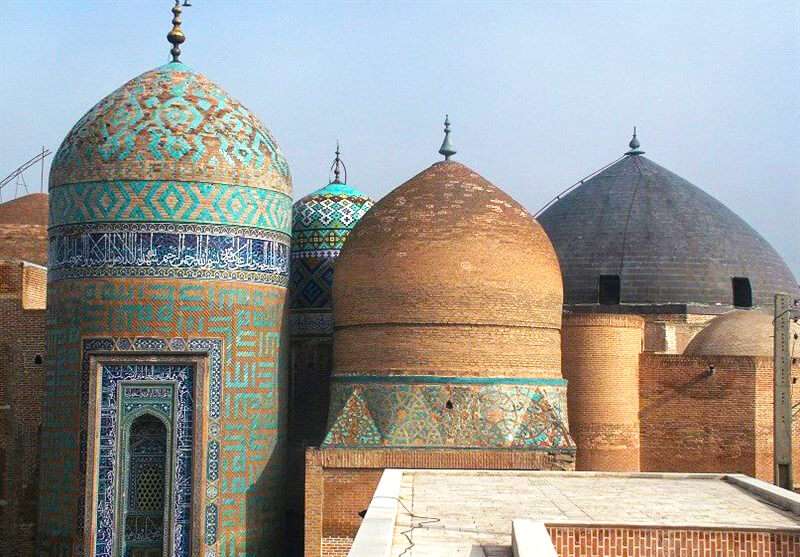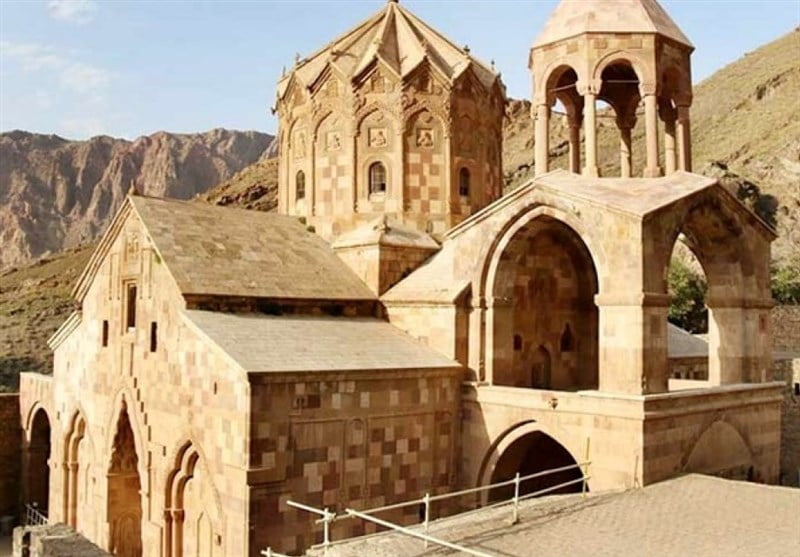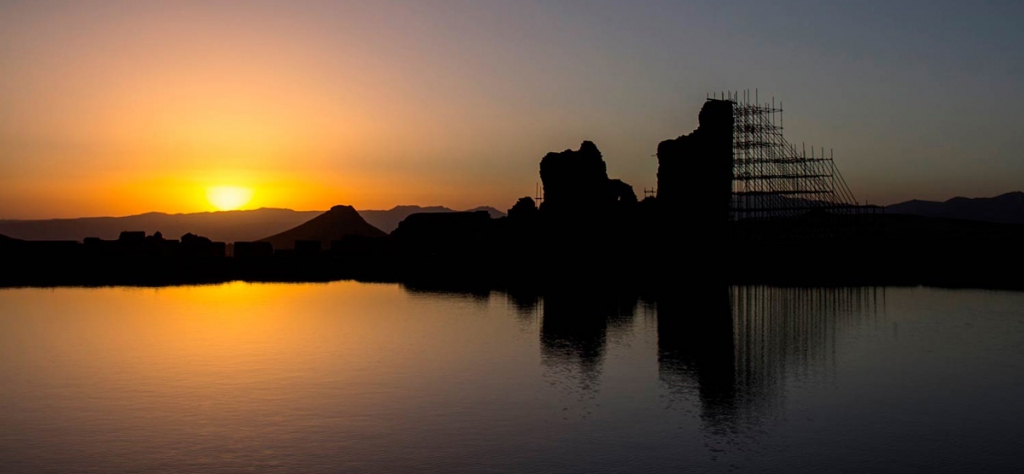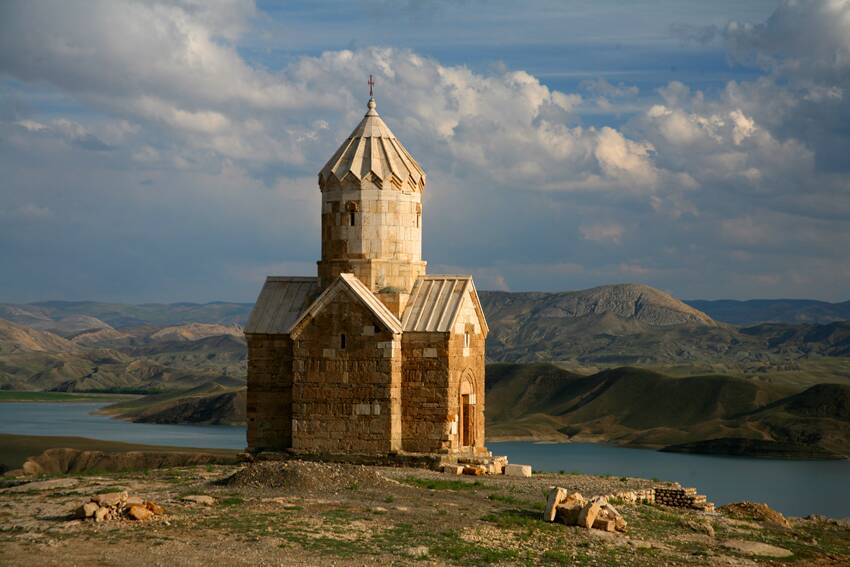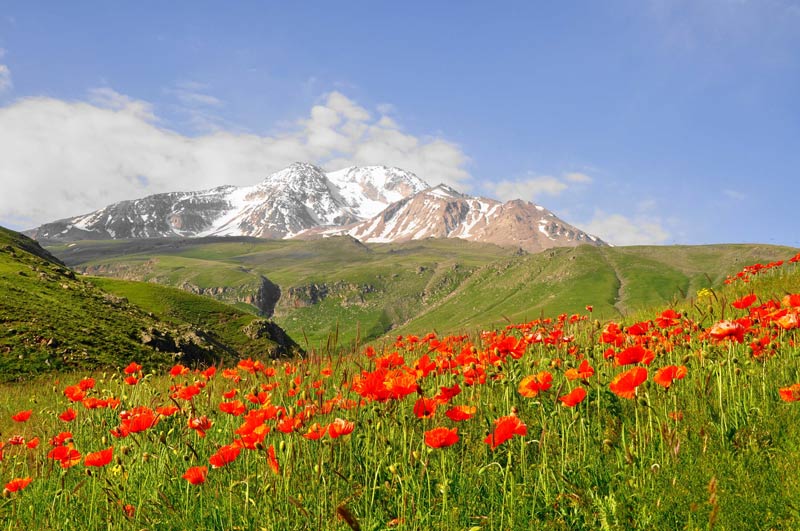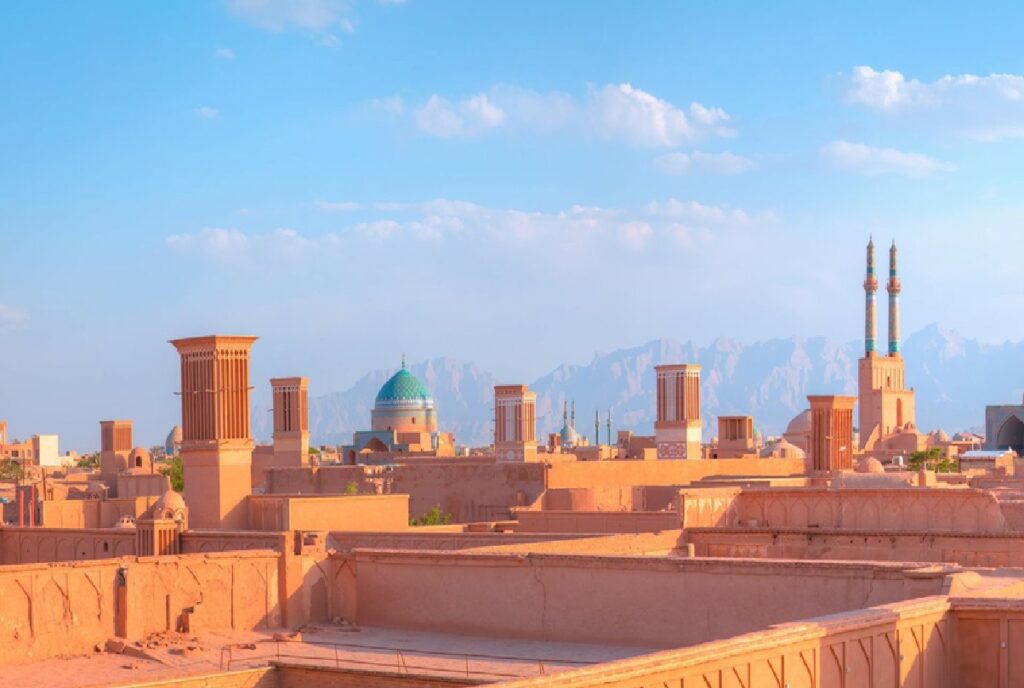The Armenian Monastic Ensembles in Iran, consisting of the St. Thaddeus Monastery, the St. Stepanos Monastery and the Chapel of Dzordzor are a testament to the cultural and religious heritage of the region. Built during the Safavid era by Armenian architects and builders, these monasteries feature a distinctive architectural style that blends Armenian, Byzantine, Persian, and other cultural influences. They have served as centers of worship, learning, and community life for the Armenian people in Iran for centuries, and their inclusion on the UNESCO World Heritage List highlights their significance to the world.
To visit the Armenian Monastic Ensembles, look into our Iran World Heritage Tour or Biblical Trip in Iran.
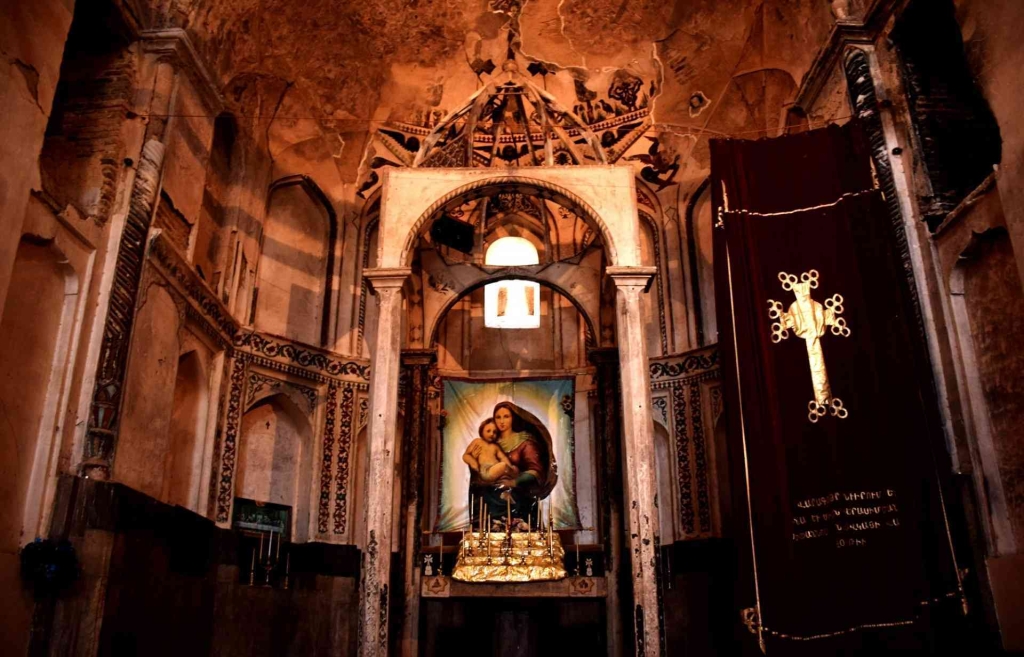
Monastery of Saint Thaddeus or Qara Kelisa
The Monastery of Saint Thaddeus, also known as Qara Kelisa, is believed to have been founded in the 1st century AD by Saint Thaddeus, one of the twelve apostles of Jesus. The current structure of the monastery is a complex of buildings that were built during the Safavid era in the 14th century and features a blend of Armenian, Byzantine, and Persian architectural styles. Located in a stunningly beautiful natural landscape in the foothills of the mountains, the Monastery of Saint Thaddeus has survived numerous wars, invasions, and natural disasters throughout its more than 1,500-year history as a center of worship and pilgrimage. Read more about Qara Kelisa.
Explore the Beauty of the St. Thaddeus Monastery
The Monastery of St. Stepanos, also known as the Holy Mother of God Monastery was founded in the 9th century AD and is believed to have been built on the site of an earlier pagan temple. The current structure of the monastery dates back to the 13th century, and features a blend of Armenian, Byzantine, and Persian architectural styles. It is known for its stunning frescoes, carvings, and other decorative elements. A local story behind the Monastery of St. Stepanos is that it is said to have been built by only one man, an Armenian architect and builder who worked on the monastery for 17 years without any assistance. Read more about St. Stepanos Monastery.
Discover the Chapel of Dzordzor: A Hidden Gem
The Chapel of Dzordzor, also known as the St. Gevorg Chapel is believed to have been built during the 12th century AD. The chapel is particularly notable for its striking frescoes, which depict scenes from the life of Jesus and other religious figures, as well as intricate carvings and decorative motifs. Despite its relatively small size, the Chapel of Dzordzor has played an essential role in the cultural and religious life of the region for centuries. The chapel is known for its healing properties and is said to have cured numerous illnesses and afflictions over the years. Read more about The Chapel of Dzordzor.
Why is The Armenian Monastic Ensembles in Iran recognised as a UNESCO world heritage?
The Armenian Monastic Ensembles in Iran, which consist of the St. Thaddeus Monastery, the St. Stepanos Monastery and the Chapel of Dzordzor was recognized as a UNESCO World Heritage Site in 2008. The UNESCO designation highlights the significance of these monasteries as cultural and historical landmarks and recognizes their importance to the world as examples of exceptional cultural and artistic achievements. The monasteries are considered to be outstanding examples of Armenian ecclesiastical architecture and design and are revered by Armenian Christians as important pilgrimage sites. Additionally, the monasteries are known for their unique blend of Armenian, Byzantine, Persian, and other cultural influences, which have contributed to the richness and diversity of the region’s cultural heritage.
Where is The Armenian Monastic Ensembles of Iran located?
The Armenian Monastic Ensembles are located in the northwestern region of Iran, in the province of West Azerbaijan. The St. Thaddeus Monastery is situated in the town of Chaldoran, near the border with Turkey, while the St. Stepanos Monastery is located about 15 kilometers to the west of the town of Jolfa.
What visit next?
After visiting the Armenian Monastic Ensembles, you can visit the other UNESCO World Heritage nearby landmarks such as the Bazaar of Tabriz or head for the mausoleum of Sheikh Safi al-Din in Ardabil.
If you are interested in natural landscapes, you may want to consider visiting Sabalan Mountain to have a nice trek there or use the mineral spas in Sarein.
By the way, we have included the Armenian Monastic Ensembles in 2 of our tour packages: Iran World Heritage Tour and Biblical Trip in Iran. These packages offer a unique opportunity to explore the rich cultural and historical heritage of the region, including the stunning architecture and spiritual significance of the monasteries. Whether you are interested in exploring the region’s World Heritage sites or tracing the footsteps of biblical figures, our tour packages offer a comprehensive and immersive experience of Iran’s diverse cultural and religious traditions.
Let us know your experiences of visiting or your questions about the Armenian Monastic Ensembles in the comment box below, we will be happy to hear from you!

